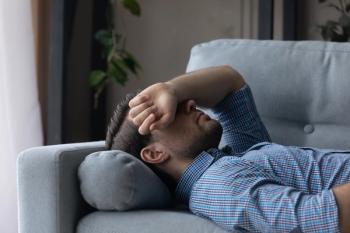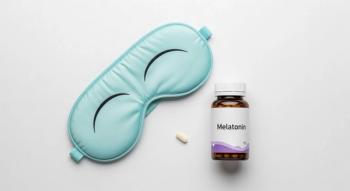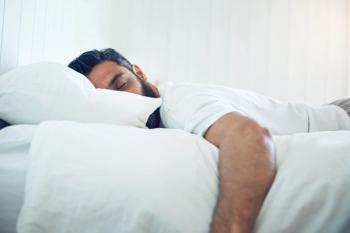
- Vol 40, Issue 5
Addressing Narcolepsy: Approaches and Advances
CASE-BASED PSYCH PERSPECTIVES
Psychiatric disorders are common among patients with
Narcolepsy and Orexin
“This is a great area of focus and understanding that we’ve evolved over the last 15 to 20 years, as we’ve learned more about the neuropeptides that are involved in sleep-wake,” said Roy.
Roy explained that type 1 narcolepsy involves an autoimmune process involving the neurons that make the neuropeptide orexin. At least 80% of the cells are damaged, and orexin can not be made.
Orexin is considered the backbone of the sleep-wake system and promotes wakefulness throughout the day. “The way I think about it is like a light switch,” Roy said. “‘On’ means awake; ‘off’ means asleep. Orexin, when working properly and you are making enough of it, keeps the switch on throughout the day. Then you go to bed, orexin decreases at night, and the switch can turn off and all the sleep-promoting neurons can take over.”
“Orexin is so important because it is not only promoting the awake circuits, but it is doing other things,” added Bogan. “It is going to be really interesting to see what orexin antagonists do—how much effect they have on the dissociative symptoms at night, as well as the cataplexy.”
Type 2 narcolepsy, narcolepsy without cataplexy, is more nebulous, and the path to physiology is not clear, Roy explained. Fortunately, there have been advances in the pharmacological approaches for narcolepsy, Roy and Bogan noted. “What I’m grateful for is in the last few years the plethora of options that are starting to emerge in our toolbox,” Roy said. “For years, up to 5, 10 years ago, we were pretty limited in what we could offer [patients].”
Between the 1950s and 1970s, stimulants were the mainstay, with agents that increased the amount of adrenergic or noradrenergic neurotransmitters in the brain. “They are effective, but they also come with their side effects,” Roy said. Additional options (ie, modafinil, a dopamine reuptake inhibitor, and atomoxetine, a norepinephrine reuptake inhibitor), became available in the 1980s and 1990s, Roy said.
“So, we had newer tools that don’t necessarily increase the amount of dopamine or increase the amount of norepinephrine—just block the reuptake to maintain a sustained level.” They also have a pretty good therapeutic profile and a relatively low adverse effect profile, he added.
Next, in the early 2000s, sodium oxybate came onto the market. “And then for a long, long time, that was essentially our arsenal,” Roy said.
“In the past few years, we have opened our neurotransmitter targeting to the histamine space,” with pitolisant gaining approval about 5 years ago, Roy said. “Up to this point, we’ve been able to target dopamine, norepinephrine. Serotonin has been looked at, but we don’t see as robust of an alerting effect with serotonergic agents...They do have benefit potentially from a cataplexy perspective, but really not from an alerting mechanism.”
More recently, the dopamine-norepinephrine reuptake inhibitor solriamfetol has emerged, Roy said, and it has a fairly potent alerting effect with a long duration of action, allowing for 1 dose in the morning. He noted pitolisant also has a long duration of action, and armodafinil, the sister version of modafinil, has a slightly longer duration of action and sustains the patient throughout the day.
Meanwhile, oxybate has been shown to help the
“The orexin system maintains that wakefulness, but as it decreases in the evening or at night, the GABA system takes over to put the brain to sleep,” Roy explained. “So oxybate targets that GABAB which we believe helps stabilize sleep.”
Roy said patient education is important. “Some don’t perceive their disrupted nocturnal sleep.” He explained stabilizing their sleep “improves their mornings, and it can improve their daytime.”
Roy added, “Targeting different neurotransmitters right now is the name of the game,” although monotherapy may not be sufficient.
Case Study: Avoiding Drug Interactions
“Lisa,” an 18-year-old woman, presents with concerns about attending college because of profound
Lisa also reports that she collapses and loses muscle tone for about a minute after her brother sneaks up and surprises her. She explains that she does not fall but “melts” into the floor. She does not pass out, and she can hear her brother. She also has vivid colorful dreams and has panic attacks at night in which she feels she cannot breathe.
A cardiologist has assessed her for arrhythmia, and a neurologist has checked for seizure disorder.
She was seen by a psychiatrist and received fluoxetine 20 mg and methylphenidate for
Her Epworth Sleepiness Scale score was 18, and she had a sleep latency on fluoxetine of 12 minutes. Interestingly, she had normal oxygen, with no snoring. She fell asleep within 3 minutes after shutting the lights. She had 1 sleep onset rapid eye moment (REM) episode during the daytime.
Discussion: Avoiding Drug Interactions
“Obviously the excessive daytime sleepiness is not unique to narcolepsy,” Roy said. With partial seizures and syncope ruled out, combining the daytime sleepiness, the startle response with atonia while still being aware of one’s environment, and REM vivid phenomenon makes this is classic type 1 narcolepsy, Roy said.
“The peak incidence of narcolepsy is right around age 15, 16,” Bogan added. “The autoimmune system is revved up at that age. You get the flu or mono…And if you’re HLA DQB1*0602—your HLA phenotype is right—and all the stars align, you might knock out those orexin neurons and develop type 1 narcolepsy.”
Once the diagnosis is clear, there are many factors involved in choosing a treatment strategy. “She’s 18, so she’s technically an adult,” Bogan said. “If she were 15, what do you think would be the drug of choice?”
Roy answered, “We would have to go with oxybate; it’s the only FDA-approved option for age 7 and above.” He explained the choices then include sodium oxybate, low sodium oxybate, and a new emerging once-a-night oxidate that Roy noted would be coming out soon. Ultimately, low oxybate therapy is prescribed. Although there is significant improvement in the sleep disruption, vivid dreams paralysis, and the cataplexy, Lisa reports she still feels sleepy. She insists on remaining on her oral contraceptive, which plays a role in deciding next steps.
Roy noted that modafinil, armodafinil, and pitolisant all have drug-drug interactions with oral contraception, and thus are not appropriate choices. He added he would consider solriamfetol in this case, because it does not go through any of the cytochrome P systems and would allow her to continue the oral contraceptives. He suggested using it to supplement the oxybate at night and help her get through the day better.
Case Study: Complicated Comorbidities
“John” is a 29-year-old project manager who presents with excessive sleepiness. He reports vivid dreams and episodes of waking in the night, feeling paralyzed. He feels short of breath and panicked because of that feeling. These episodes induce panic. His bed partner says that he talks, yells, and kicks in his sleep. Upon wakening, the partner reports that John says he sees images or hears somebody outside trying to break into the house.
John also has adult ADHD, for which he is taking extended-release methylphenidate. He notes the ADHD medication helps his sleepiness, but the sleepiness remains a problem. He dozes off in the afternoon, has trouble with projects during the day, and dozes when he is not adequately stimulated.
The clinical picture is complicated by
John’s BMI is 32, and his blood pressure 129/89. His heart rate is 78 BPM. He takes metoprolol for tachycardia and anxiety.
His multiple sleep latency test (MSLT) was 6 minutes; he only had 1 sleep-onset REM period (SOREMP). A polysomnography indicated mild sleep apnea, with apnea-hypopnea score of 6 and mild, intermittent snoring.
Discussion: Complicated Comorbidities
REM behavior disorder may be a feature in narcolepsy, Roy commented, although it typically occurs in patients older than 50 years. However, REM behavior disorder may occur at a younger age with narcolepsy.
The mild sleep apnea does not explain the degree of sleepiness, Roy said. “You can have REM dissociation, REM-related phenomenon with sleep apnea with normal individuals, but, again, the profoundness of how often it is happening, how intense [the phenomena] are, it is hard for me to blame it on a mild degree of sleep apnea.”
Bogan and Roy discussed the implications of the escitalopram on the sleep analysis. “He is on an antidepressant, which... may have suppressed a second REM phenomenon—a SOREMP potentially,” Roy said.
Bogan noted a high prevalence of mood disturbances, anxiety, and
In such cases, Bogan ascertains the feasibility of stopping the antidepressant for at least 2 weeks (more for fluoxetine) before a sleep study. “There are enough data, observational data, that suggest that this [antidepressant] is suppressing REM sleep and will affect our nap studies,” he remarked. In this case, “that 1 SOREMP may have been distorted by [the escitalopram].”
“Putting it all together, I still have a high suspicion there is probably type 2 narcolepsy going on, with an underlying mild sleep apnea,” Roy said.
Because of John’s elevated blood pressure, Roy said he would first try to manage the mild sleep apnea via positive airway pressure therapy or an oral appliance. “But my suspicion is his persistent sleepiness—those persistent REM phenomena—may not disappear just with treating the OSA [obstructive sleep apnea]. At that point, I would feel more confident saying this is most likely a type 2 narcolepsy...and then tackling those REM-related phenomena.”
“He’s seen some benefit [from a stimulant]. But could we have a little more enhanced benefit with [solriamfetol], with a nonstimulant option because of his concerns with blood pressure, tachycardia, anxiety?” Roy pondered.
Roy noted that the data indicate little, if any, heart rate and blood pressure effects. “Then you can get the weight-promoting benefits without having those downstream side effects. I think anxiety was only seen in less than 2% or 3% of the cases....It’s still possible to have those downstream side effects, but the probability is usually a little bit significantly less than the traditional stimulants.” He would consider adding it to the mix or even replacing the stimulant with solriamfetol.
Concluding Thoughts
“It’s important to keep a broad-minded approach,” Roy said. “And I think it’s important to find these patients earlier in terms of changing their trajectory in life. The number of patients I’ve seen that we’re seeing in their 30s and 40s—they could have been in a different place in their career and their path in terms of their family members if they knew what was going on at an earlier age.”
“We do have lots of choices,” Bogan said. “[Treatments] have different delivery processes, different mechanisms of action, and polypharmacy is, quite frankly, not uncommon.”
Articles in this issue
over 2 years ago
Substance Use Among Adolescents and Young Adultsover 2 years ago
The Urgent Need to Address Youth Mental Healthover 2 years ago
White House Announces Record Health Insurance Enrollmentover 2 years ago
Hospital Foodover 2 years ago
Lithium: Past, Present, and Futureover 2 years ago
Investigating the Impact of ADHD on Smoking Cessation Outcomesover 2 years ago
Aerobic Exercise: Benefits Following Brain Injuryover 2 years ago
Social Psychiatric PredictionsNewsletter
Receive trusted psychiatric news, expert analysis, and clinical insights — subscribe today to support your practice and your patients.

















